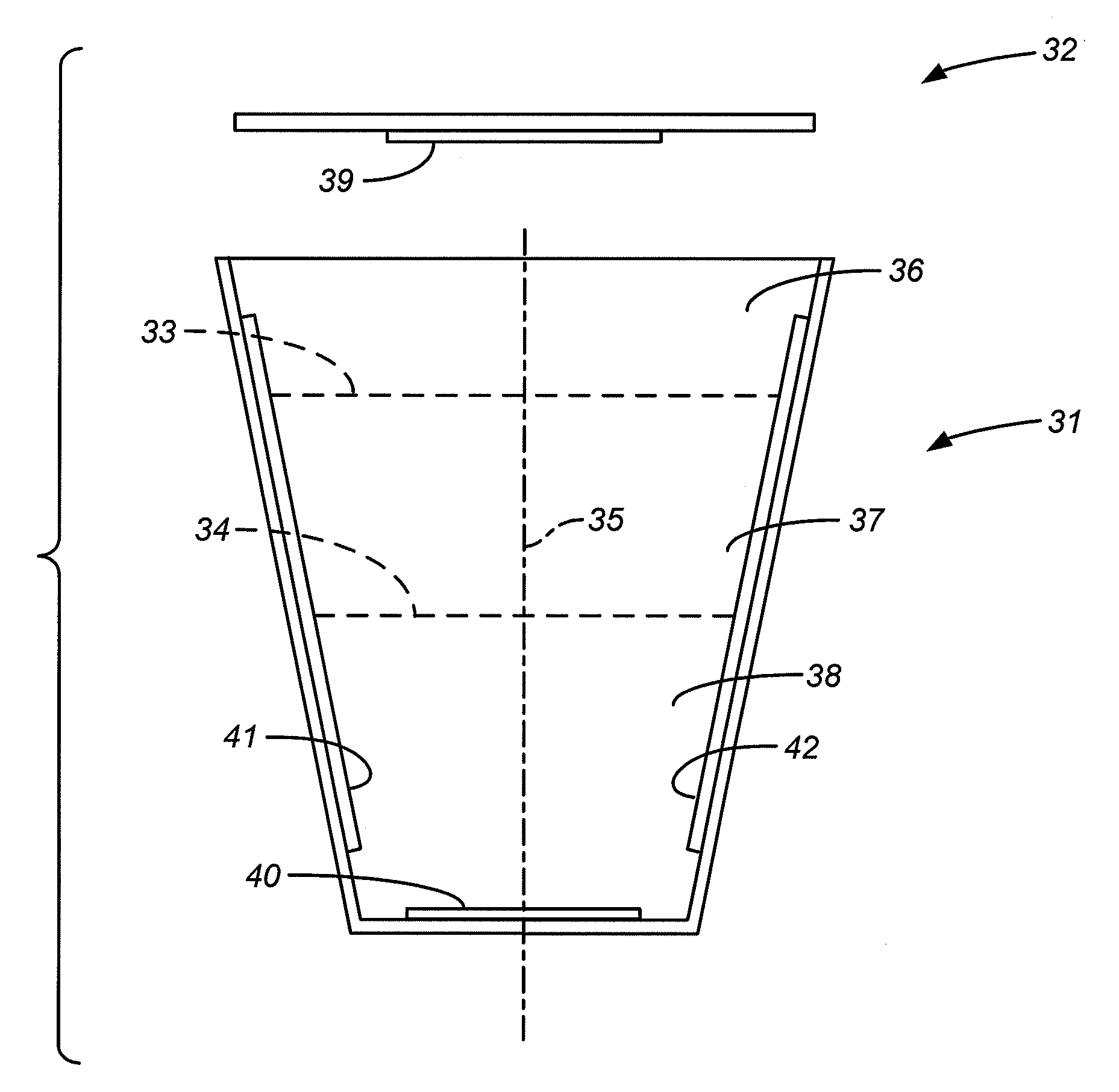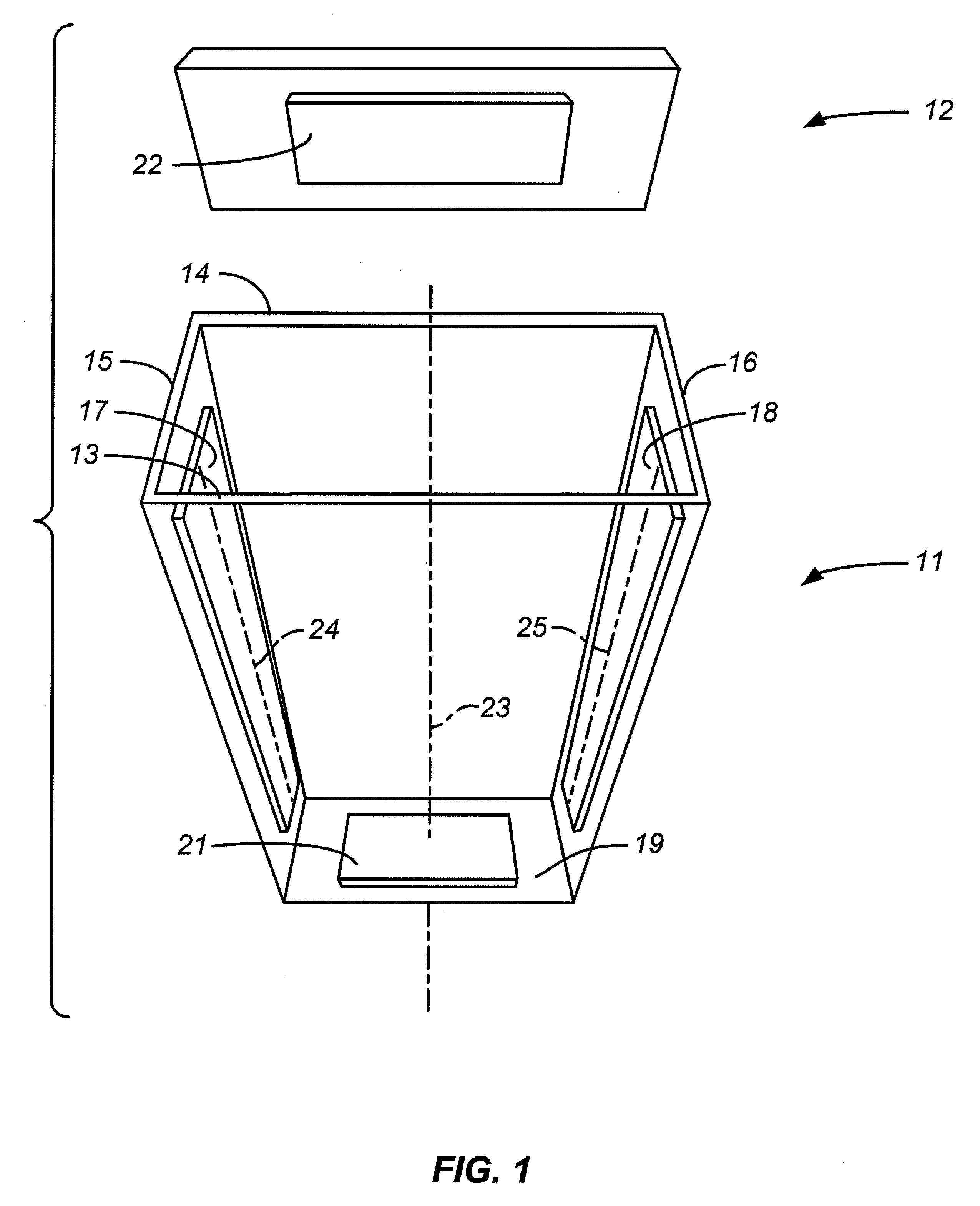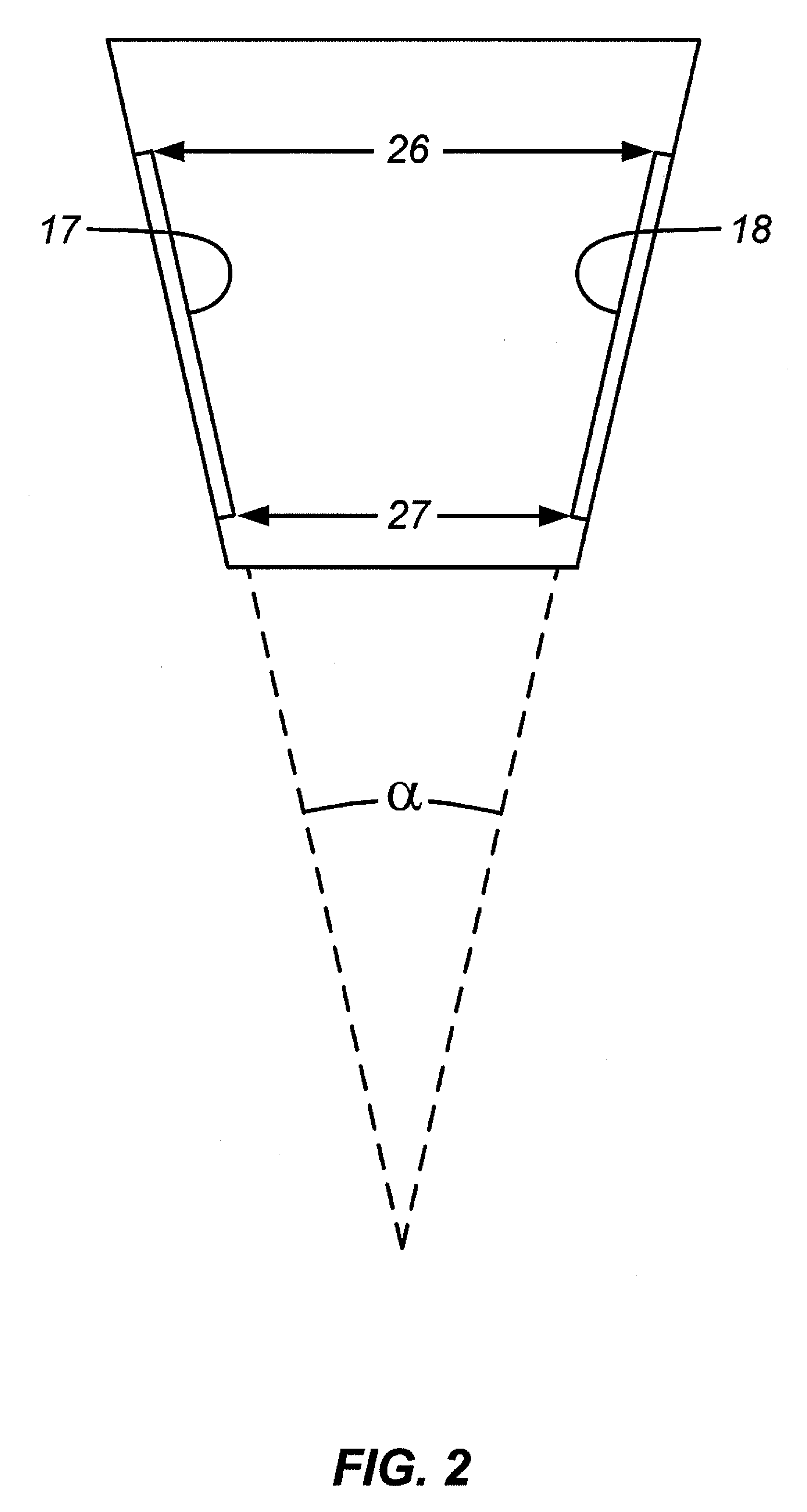Electroporation cuvette with spatially variable electric field
a cuvette and electric field technology, applied in the field of electrocorrosion, can solve problems such as cell lysis
- Summary
- Abstract
- Description
- Claims
- Application Information
AI Technical Summary
Benefits of technology
Problems solved by technology
Method used
Image
Examples
Embodiment Construction
[0012]While the features defining this invention are capable of implementation in a variety of constructions, the invention as a whole will be best understood by a detailed examination of specific embodiments. The drawings hereto represent such embodiments.
[0013]The cuvette 11 shown in FIG. 1 has an open top and a lid 12 which can be attached or separate. The cuvette 11 is rectangular in its horizontal cross section with planar walls on four sides. The front wall 13 and back wall 14 are parallel while the end walls 15, 16 are angled to form a tapering profile with the widest separation at the top and the narrowest at the base. Affixed to the two end walls and exposed to the interior of the cuvette are a pair of opposing electrodes 17, 18 which, due to the sloping walls to which they are attached, are non-parallel. These electrodes are the shocking electrodes, and due to their non-parallel arrangement, the separation between these electrodes near the top of the cuvette is greater tha...
PUM
| Property | Measurement | Unit |
|---|---|---|
| angle | aaaaa | aaaaa |
| angle | aaaaa | aaaaa |
| size | aaaaa | aaaaa |
Abstract
Description
Claims
Application Information
 Login to View More
Login to View More - R&D
- Intellectual Property
- Life Sciences
- Materials
- Tech Scout
- Unparalleled Data Quality
- Higher Quality Content
- 60% Fewer Hallucinations
Browse by: Latest US Patents, China's latest patents, Technical Efficacy Thesaurus, Application Domain, Technology Topic, Popular Technical Reports.
© 2025 PatSnap. All rights reserved.Legal|Privacy policy|Modern Slavery Act Transparency Statement|Sitemap|About US| Contact US: help@patsnap.com



